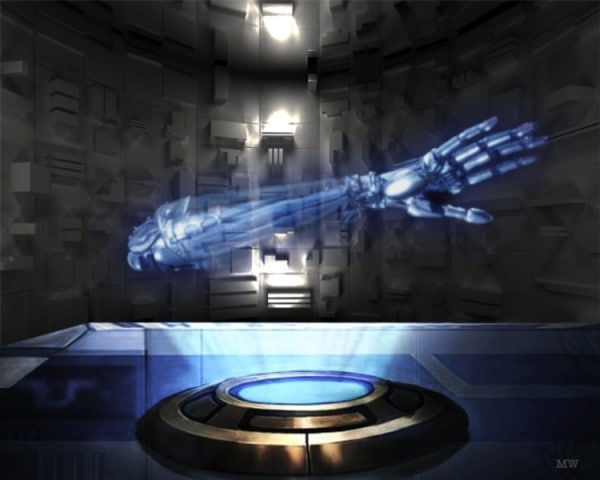
In its early days, holography required high-power and expensive lasers, but currently, mass-produced low-cost laser diodes, such as those found on DVD recorders and used in other common applications, can be used to make holograms and have made holography much more accessible to low-budget researchers, artists and dedicated hobbyists. Optical holography needs a laser light to record the light field. Various methods of converting the variation in transmission to a variation in refractive index (known as "bleaching") were developed which enabled much more efficient holograms to be produced.

They were not very efficient as the produced grating absorbed much of the incident light. Early holograms used silver halide photographic emulsions as the recording medium. The development of the laser enabled the first practical optical holograms that recorded 3D objects to be made in 1962 by Yuri Denisyuk in the Soviet Union and by Emmett Leith and Juris Upatnieks at the University of Michigan, US.

Horizontal symmetric text, by Dieter Jung In this sense, holograms do not have just the illusion of depth but are truly three-dimensional images. That is, the view of the image from different angles represents the subject viewed from similar angles. When suitably lit, the interference pattern diffracts the light into an accurate reproduction of the original light field, and the objects that were in it exhibit visual depth cues such as parallax and perspective that change realistically with the different angles of viewing. It is an encoding of the light field as an interference pattern of variations in the opacity, density, or surface profile of the photographic medium. The holographic medium, for example the object produced by a holographic process (which may be referred to as a hologram) is usually unintelligible when viewed under diffuse ambient light. A hologram is a photographic recording of a light field, rather than an image formed by a lens. The reproduced light field can generate an image which still has the depth, parallax, and other properties of the original scene.

The word holography comes from the Greek words ὅλος ( holos "whole") and γραφή ( graphē " writing" or " drawing").Ī hologram is a recording of an interference pattern which can reproduce a 3D light field using diffraction. The technique as originally invented is still used in electron microscopy, where it is known as electron holography, but optical holography did not really advance until the development of the laser in 1960. This discovery was an unexpected result of research into improving electron microscopes at the British Thomson-Houston Company (BTH) in Rugby, England, and the company filed a patent in December 1947 (patent GB685286). His work, done in the late 1940s, was built on pioneering work in the field of X-ray microscopy by other scientists including Mieczysław Wolfke in 1920 and William Lawrence Bragg in 1939. The Hungarian- British physicist Dennis Gabor (in Hungarian: Gábor Dénes) was awarded the Nobel Prize in Physics in 1971 "for his invention and development of the holographic method". Overview and history Introduction to Holography (1972 educational film) The resulting digital image is then printed onto a suitable mask or film and illuminated by a suitable source to reconstruct the wavefront of interest.

Holograms can also be computer-generated by modelling the two wavefronts and combining them digitally. When only the second wavefront illuminates the interference pattern, it is diffracted to recreate the original wavefront. In principle, it is possible to make a hologram for any type of wave.Ī hologram is made by superimposing a second wavefront (normally called the reference beam) on the wavefront of interest, generating an interference pattern which is recorded on a physical medium. It is best known as a method of generating real three-dimensional images, but also has a wide range of other applications. Holography is a technique that enables a wavefront to be recorded and later reconstructed. Two photographs of a single hologram taken from different viewpoints For other uses, see Hologram (disambiguation).


 0 kommentar(er)
0 kommentar(er)
